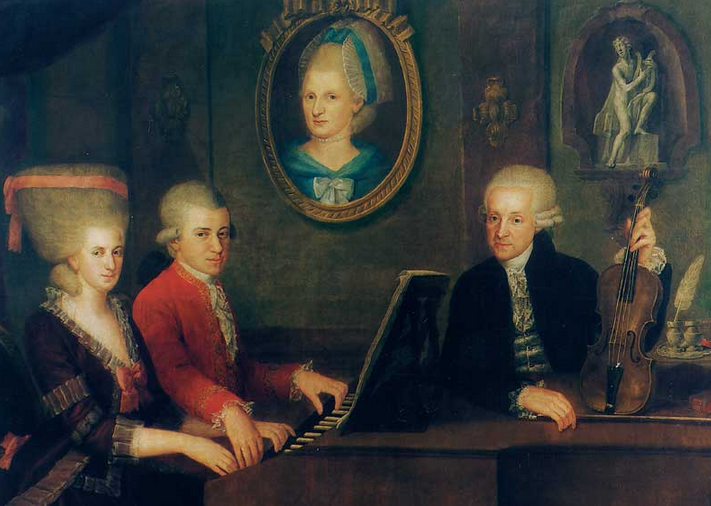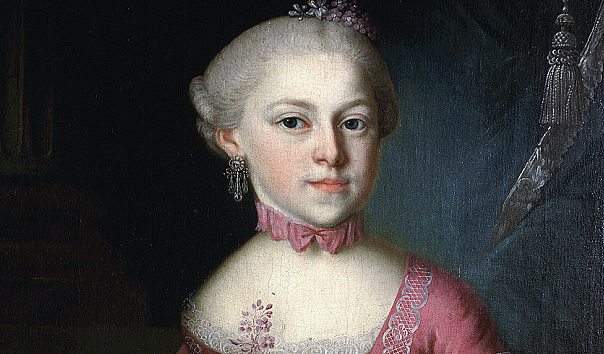Controversial Darwin professor’s latest research sheds light on sibling’s musical relationship.
Aussie Professor Martin Jarvis from NT’s Charles Darwin University is no stranger to musical controversy. Several years ago he ruffled feathers with his 2006 claim that Anna Magdalena Bach, the second wife of Johann Sebastian, was the likely author of a number of the composer’s best-known works. That theory resurfaced in conjunction with a documentary film earlier this year and drew another chorus of disapproval from musicologists and professional cellists alike. “I find it impossible to contemplate that someone as intrinsically honest as Johann Sebastian Bach would allow this kind of deception,” wrote Professor Winsome Evans in Limelight, while Steven Isserlis in The Guardian inveighed that “Anna Magdalena Bach did not write the Bach suites, any more than Anne Hathaway wrote Shakespeare’s plays, George Henry Lewes wrote George Eliot’s novels, or Freddie Starr ate his friend’s hamster.” Now Jarvis has a new theory, again based on forensic examination of musical handwriting, and this time it involves Mozart and his prodigiously talented sister Maria Anna (or ‘Nannerl’ as she was affectionately known in the Mozart family).
 The Mozart family: Nannerl, Wolfgang, father Leopold and mother (in portrait)
The Mozart family: Nannerl, Wolfgang, father Leopold and mother (in portrait)
Maria Anna Mozart was five years older than her famous brother and was taught harpsichord by her father Leopold who regularly took her and Wolfgang on European tours. Despite being noted as an outstanding fortepianist and getting top billing in the early days, as she grew older her parents thought it inappropriate for her to continue in a professional career, preferring instead to marry her off. So, while Wolfgang went on to international fame (though sadly not fortune), poor Nannerl had to stay at home in Salzburg with her mother.
The ‘new’ research (apparently part of a five-year study, yet curiously once again timed to promote a piece of ‘entertainment’ – in this case a new play opening in London), was conducted by the same forensic document team as in the case of Mrs Bach, and involved analysing musical calligraphy by several members of the Mozart family. Jarvis has scrutinised Maria Anna’s music notebook and claims to have discovered that one of the three musical handwritings contained therein – known to scholars as “Anonymous 1” – was in fact that of Nannerl herself. It has long been known that the notebook was used as a pedagogical aid by Mozart’s father to teach the young Wolfgang to play piano, but now Jarvis hopes to use his discovery to explore the possibility that Nannerl may have had a hand in composing some of the early works written by her child-prodigy of a brother.
 Maria Anna (Nannerl) Mozart
Maria Anna (Nannerl) Mozart
“We know that Maria Anna composed but no one has ever been able to identify the music written by her,” Jarvis told The Telegraph in the UK “Now we have identified her musical fingerprint, we can look for music in her hand and see whether there is evidence of her helping her brother. What is distinctly possible is that with the works of Wolfgang Amadeus, she may have had some involvement in it – particularly the earlier pieces. We have not found evidence of it yet.”
Jarvis’s black-and-white statement that there is no evidence to suggest that any work by Mozart might actually be by his sister hasn’t stopped the usual tabloid frenzy. The Sydney Morning Herald ran with “Did Mozart’s sister write his music for him?” and in a headline of breath-taking inaccuracy Norman Lebrecht reported “Mrs Bach’ author now claims Mozart’s sister wrote his music.” But why let inconvenient facts get in the way of a good story? Not that Jarvis, a man who seems to court such publicity, is likely to complain. The trajectory of his hypotheses seems clear, and one presumes it’s only a matter of time before he makes that leap himself. “As a girl in the 18th century, it was highly unlikely Marie Anna was ever going to put her name on anything – she would not have been allowed,” he maintains. And as to Wolfgang and any possible questions of musical authorship: “We have only just opened the crack in the door. Maria Anna has always been this mysterious piece in history. What else we can find? Who knows?”











Comments
Log in to join the conversation.